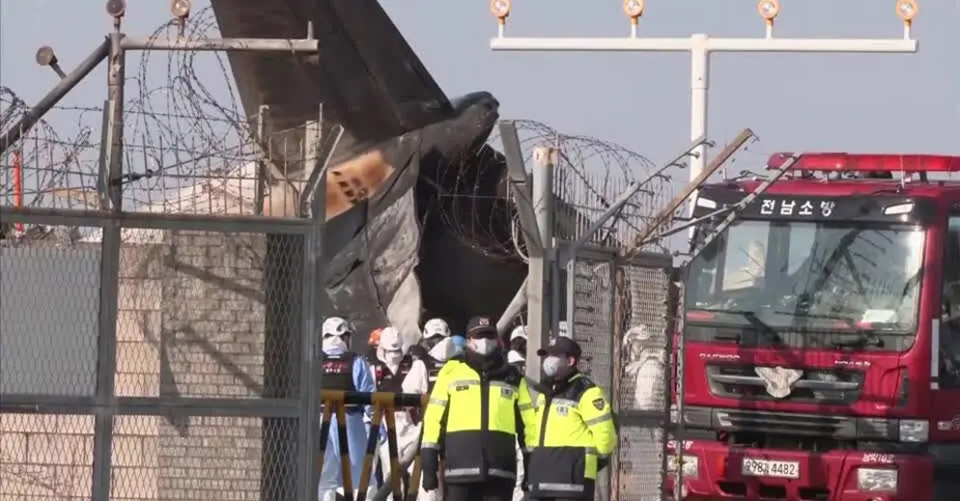
SEOUL – The South Korean government has declared a national mourning period of seven days following the tragic crash of a Jeju Air passenger plane en route from Bangkok to South Korea, December 30. The crash occurred yesterday in the southwestern region of the country, claiming the lives of 179 people, with only two survivors. Among the victims were two Thai women.
Acting President Choi Sang-mok convened an emergency meeting with officials in Seoul after visiting the crash site in Muan to oversee rescue and relief operations. He expressed condolences on behalf of the government and announced a nationwide mourning period lasting until midnight next Saturday.
The government has designated the crash site in Muan, South Jeolla Province, as a special disaster zone, mobilizing central resources for rescue and recovery efforts. The plane, carrying 175 passengers and 6 crew members, crashed during landing, resulting in one of South Korea’s worst aviation disasters.
Rescue and Investigation Updates:
Hundreds of rescue workers worked through the night to recover evidence from the crash site, including both black boxes – the flight data recorder and cockpit voice recorder. These have been sent to experts for analysis to determine the cause of the crash. Authorities have so far identified 120 of the deceased, with efforts ongoing to confirm the identities of the remaining victims.
The passenger manifest revealed 173 South Koreans and 2 Thais onboard. The group included 82 men, 93 women, and five children under the age of 10, with the youngest being 3 years old. Most passengers were returning from a five-day Christmas holiday trip to Thailand organized by a travel company that had chartered the flight.
Of the six crew members, four perished, while two flight attendants survived with moderate injuries. Both have been hospitalized in Seoul and remain conscious.
Probable Causes:
Initial investigations point to severe weather and bird strikes as likely contributing factors. The bird strike reportedly caused a landing gear malfunction, preventing the front wheels from deploying during landing. This forced the aircraft to skid along the runway and crash into a concrete barrier.
Experts have noted that Muan Airport has the highest reported incidence of bird strikes in South Korea. However, some investigators argue that further inquiry is necessary, as a bird strike alone may not account for simultaneous failures in all three front landing gear mechanisms. Video footage of the crash also shows the plane skidding at unusually high speeds, raising questions about potential malfunctions in the thrust reverser or wing flaps.
Historical Context:
This incident marks the first fatal accident for Jeju Air, a low-cost carrier founded in 2005. It is also South Korea’s deadliest aviation disaster since a Korean Air crash in Guam in 1997, which killed 229 people. Moreover, it is the country’s most fatal disaster since the 2014 Sewol ferry tragedy, which claimed 304 lives.
The investigation continues as South Korea mourns the lives lost in this catastrophic event. (TNA)











